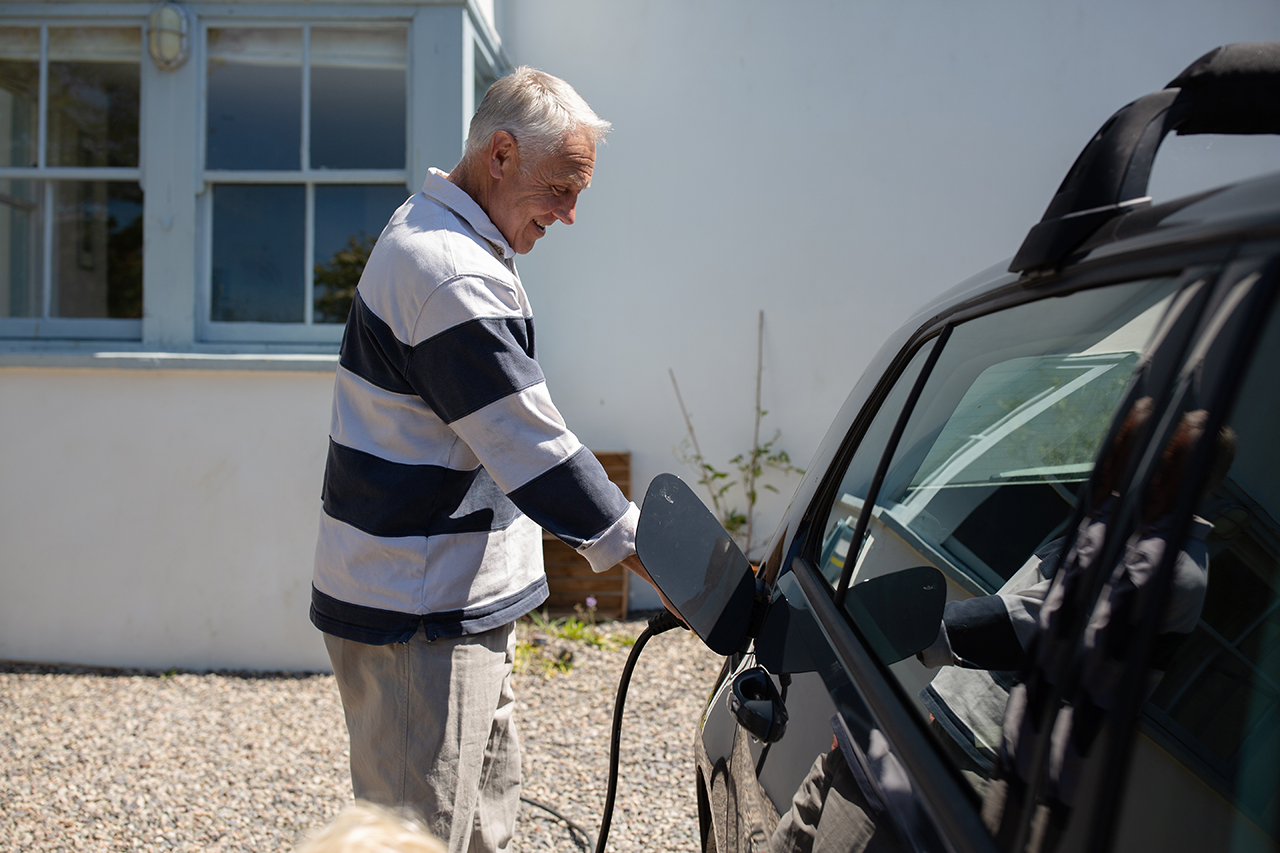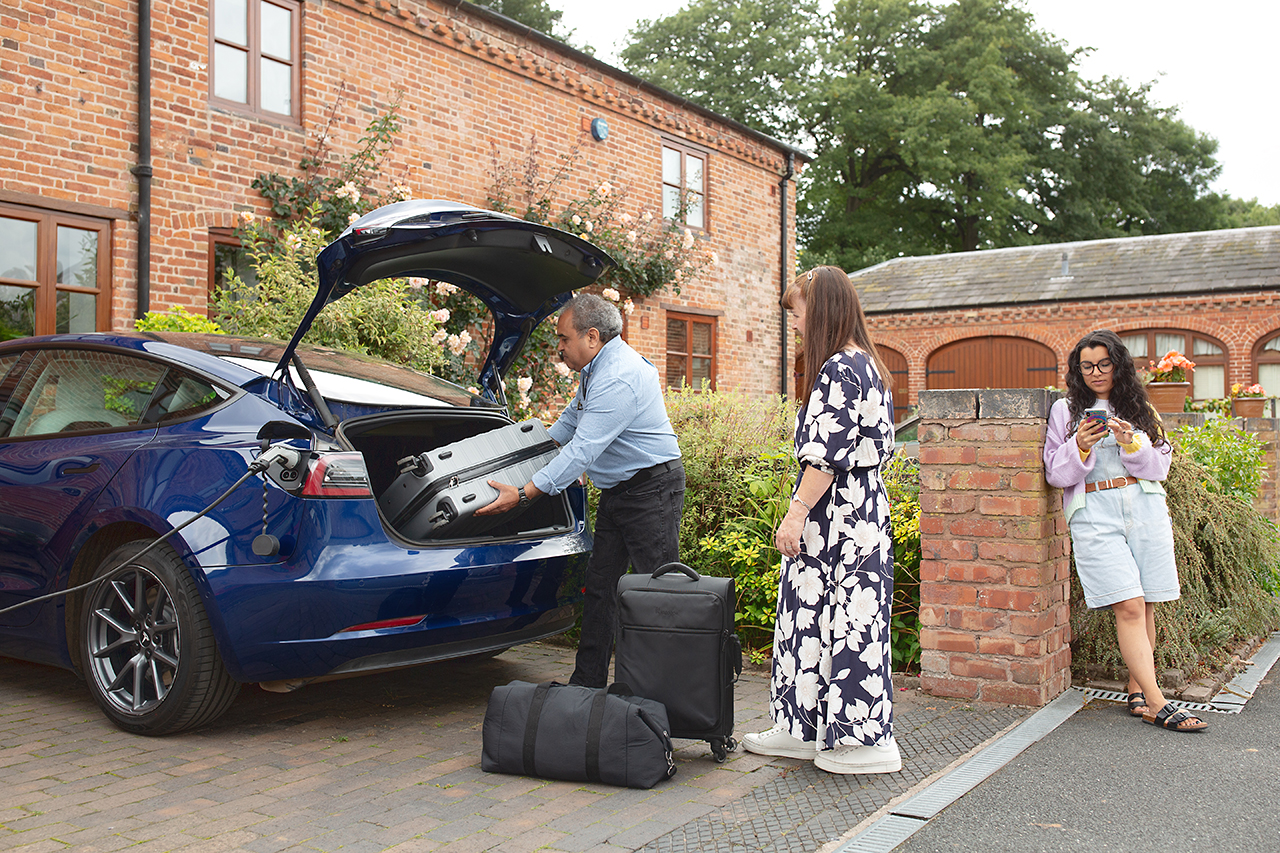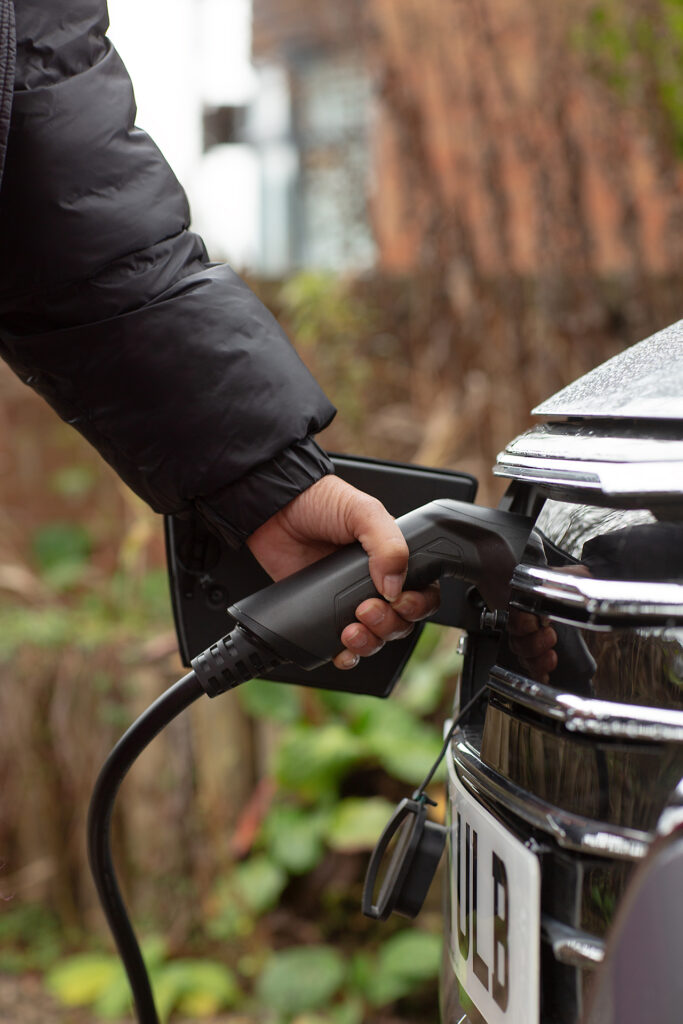
How do Electric Vehicles work?
Electric vehicles fast are becoming more popular as we slowly move away from petrol and diesel vehicles to meet our net zero targets. But how do EVs work, and how are they different from internal combustion engine (ICE) vehicles? We explain all in this article.
How do EVs work?
Electric vehicles (EVs) run on electricity, so they don’t produce any exhaust fumes, making them better for the environment.
They are powered by a large battery pack made from thousands of Lithium-ion cells, which are connected to electric motors that turn the wheels. Lithium-ion batteries are rechargeable batteries similar to those used in small electronics such as mobile phones or laptops. They have a high energy density and are much safer than other battery alternatives.

It’s true that, similar to manufacturing processes for other products, extracting minerals needed to make lithium-ion batteries does harm the environment. You can read more about the ethical and environmental discussions around EVs and how the industry is responding to them in this article.
EVs are considered automatic vehicles, as when the accelerator is pressed, energy from the battery is automatically fed to the motors, causing the wheels to turn. Many models also have regenerative braking, as the motor also works as a generator. This means that when the car slows down, the motor converts the forward motion back into electricity which goes back into the battery.
What components do EVs have?
Electric vehicles have 90% fewer moving parts than an ICE vehicle, meaning they will need less maintenance and will be less likely to stop working over time.
The main components of an EV are:
- Battery packs
The batteries store the electricity that the EV needs to work. - Electric motor
The motor takes energy from the battery to make the wheels turn by converting the electrical energy into kinetic energy. This also contains the regenerative braking mechanism to restore power to the battery. - DC/DC converter
Different parts of an EV have different voltage requirements, so the DC/DC converter converts the higher voltage power from the battery to a lower voltage to power other systems such as the navigation or radio. - Inverter
This converts the direct current from the battery to an alternating current to run the motor. This also works in reverse for the regenerative braking, converting the power back to DC to go back to the battery. - Onboard charger
The onboard charger converts the AC power from the charger to DC power to charge the battery. It also monitors the characteristics of the battery including temperature and charge percentage. - Thermal system
The cooling system is responsible for monitoring and maintaining the correct temperature and prevents components such as the battery or motor from overheating by using a combination of cooling methods. - Transmission
The transmission is what moves the power from the motor to the wheels. Unlike a standard gearbox, EVs only need a single-speed transmission. - Charge port
This is where the charger is plugged in to recharge the battery. - Auxiliary batteries
EVs often have Auxiliary batteries that mostly power other electric elements in the car, and they also work as backup batteries in case of power failure.
How long do EV batteries last?

EV batteries are designed to last between 10-20 years, but with new technological innovations batteries can last longer. Nissan claims that the majority of their EVs still have their original batteries, despite some being over 12 years old.
EV batteries are buffered, meaning they can’t use all of the power they can store, which leads to a longer battery life. The extra capacity in the battery is used over time to make up for any loss of charging capability that happens with age.
Even when the battery becomes too old to successfully power the EV, it can be used as part of a battery storage system in a home to store excess power generated from solar panels or other forms of renewable generation.
The components of batteries can also be separated out and recycled. Currently only about half of the materials in the battery can be recycled, but with advancements in recycling technology as well as developments in EV batteries, this figure is likely to increase.
How do EV chargers work?
Whether charging an EV at home or in public, the charger works in fundamentally the same way. When the charger is plugged into the vehicle, it draws electricity from the grid to deliver to the battery.
When using a public charger, most networks require an app, RFID card, or contactless payment to begin the charge. Plug the charging cable into the vehicle and then pay for the required charge to begin charging.
Charging times will vary based on the size of the battery and the power that the charger is using. Slow charges can take up to 12 hours, whereas with a rapid or ultra-rapid charger, most EVs can be charged in as little as 20 minutes.


